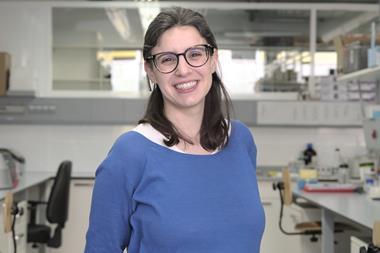Diverse approaches suit different goals
A truly original idea is a rare and precious thing. Sometimes one might emerge after a programme of concentrated investigation, but an outsider’s viewpoint – freed from the shackles of convention – can also be disruptively fruitful.

However, this process of creativity is hard to tame. Efforts to formalise it toe the fine line between encouraging and stifling imagination. It’s no surprise, then, that different organisations are taking numerous different approaches. As companies become more accepting of the ideas of ‘open innovation’ and ‘pre-competitive’ collaboration, those approaches may start to become a little more adventurous.
Partnerships between companies and universities, or even between competing firms, can advance basic science and understanding of intractable problems much faster than any of those institutions working separately, opening up better opportunities that all parties can then compete to exploit and commercialise. These can range in scale and scope. Some create institutions with hundred million dollar investments like BP’s broad-remit International Centre for Advanced Materials, Unilever’s Materials Innovation Factory in Liverpool, or Novo Nordisk’s diabetes-focused Oxford research centre. They could be facilitated by public investment, like the UK’s Catapult centres, or the Fraunhofer institutes in Germany. Others involve more targeted, smaller scale collaboration.
But partnerships still involve an element of planning and groundwork – for a start you need to know who you want as your partners. The cut-and-thrust of an open competition, with entrants from all quarters vying for backing of their ideas, brings a different kind of freedom to explore unconventional directions. Several such competitions exist, including the Royal Society of Chemistry’s Emerging Technologies (open until 13 March) and AkzoNobel’s Imagine Chemistry (open until 16 March). The RSC casts a net across technologies in the broad categories of health; energy and environment; food and drink; and materials and enabling technologies. AkzoNobel’s categories are more closely aligned to its speciality chemicals interests, but range from reducing wastewater at chemical plants to improving plastics recycling and taming highly reactive chemistry.
The formats are broadly similar – aspiring entrants (individuals, academics or small businesses) submit their ideas for scrutiny by an expert panel. Some are invited to progress further – through workshops with AkzoNobel scientists and an intensive ‘accelerator event’ in the case of Imagine Chemistry, or at a pitching contest as part of the RSC’s Chemistry Means Business event. The victors receive financial and operational support – tapping expertise from multinational partner companies in the Emerging Technologies competition, along with a cash prize, or entering more formal collaborations with AkzoNobel.
But importantly, such competitions actively court fresh ideas from unexpected sources, and to solve the biggest challenges, we’ll need all the help we can get.












No comments yet